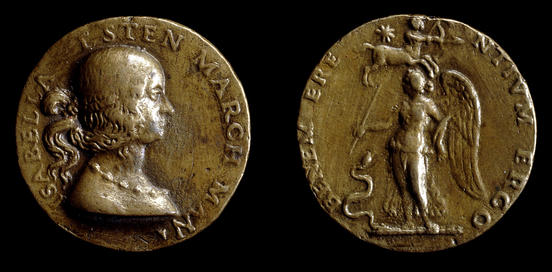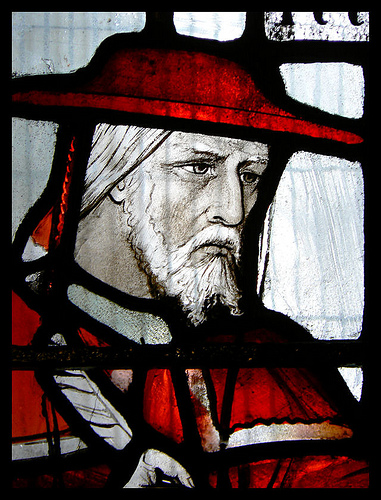|
Dorcas Martin
Dorcas Martin (1537–1599) née Eccleston, Ecclestone or Eglestone was an English bookseller and translator.McQuade, Paula, Betty Travitsky, and Anne Lake Prescott (2008). ''Early Modern Catechisms Written for Mothers, Schoolmistresses, and Children: Essential Works for the Study of Early Modern Englishwomen.'' Ashgate Publishing, Ltd. ., p. xxiv Life Dorcas and her brother John Eccleston were the children of John Eccleston, Worshipful Company of Grocers, citizen and Grocer in London, who died in December 1551 leaving property in All Hallows Honey Lane in Westcheap to his son John (then aged 12). He in 1562 having become Worshipful Company of Goldsmiths, citizen and Goldsmith granted it away in 1562. She married the goldsmith Richard Martin (Lord Mayor of London), Richard Martin, later Lord Mayor of London, sometime before 1562, and they had five sons and one daughter.Dorcas Martin's epitaph reads "Here lyeth Interred the body of Dame DORCAS Martin The late Wife of Sr Richard Ma ... [...More Info...] [...Related Items...] OR: [Wikipedia] [Google] [Baidu] |
Worshipful Company Of Grocers
The Worshipful Company of Grocers is one of the 110 Livery Companies of the City of London and ranks second in order of precedence. The Grocers' Company was established in 1345 for merchants occupied in the trade of grocer and is one of the Great Twelve City Livery Companies. History The company was founded in the 14th century by members of the ''Guild of Pepperers'', which dates from 1180. The company was responsible for maintaining standards for the purity of spices and for the setting of certain weights and measures. Its members included the suppliers of medicinal spices and herbs, who separated forming the Worshipful Society of Apothecaries in 1617. The guild was known as the ''Company of Grossers'' from 1373 until 1376 when it was renamed the ''Company of Grocers of London''. In 1428, two years after building its first hall in Old Jewry, the company was granted a Royal Charter by King Henry VI of England. One of the Great Twelve City Livery Companies, it ranks seco ... [...More Info...] [...Related Items...] OR: [Wikipedia] [Google] [Baidu] |
St Vedast Foster Lane
Saint Vedast Foster Lane or Saint Vedast-alias-Foster, a church in Foster Lane, in the City of London, is dedicated to St. Vedast (Foster is an Anglicisation of the name "Vaast", as the saint is known in continental Europe), a French saint whose cult arrived in England through contacts with Augustinian clergy. History The original church of St Vedast was founded before 1308 and was extensively repaired by 1662 on parochial initiative. NB When the book was published in 1922, only thirty-four of Wren's city churches remained. The poet Robert Herrick was baptised here in 1591. Although the church was not completely destroyed in the Great Fire of 1666,Tucker, Tony (2006). ''The Visitor's Guide to the City of London Churches''. London: Friends of the City Churches. it was so badly damaged that it was included in the list of 50 or so churches that required reconstruction by the office of Sir Christopher Wren. The main part of the church was rebuilt 1670–1673 on the old walls ... [...More Info...] [...Related Items...] OR: [Wikipedia] [Google] [Baidu] |
1599 Deaths
__NOTOC__ Events January–June * January 8 – The Jesuit educational plan, known as the '' Ratio Studiorum'', is issued. * March 12 – Robert Devereux, 2nd Earl of Essex, is appointed Lord Lieutenant of Ireland, by Queen Elizabeth I of England. * April 23 – The Earl of Essex arrives in Dublin at the head of 16,000 troops, the largest army ever seen in Ireland. * May 16 – The Kalmar Bloodbath takes place in Kalmar, Sweden. * May 29 – Essex takes Cahir Castle, supposedly the strongest in Ireland, after a short siege. * June 20 – The Synod of Diamper is convened. July–December * July – Second Dutch Expedition to Indonesia: A Dutch fleet returns to Amsterdam, carrying 600,000 pounds of pepper and 250,000 pounds of cloves and nutmeg. * July 24 – Swedish King Sigismund III Vasa is dethroned by his uncle Duke Charles, who takes over as regent of the realm until 1604, when he becomes King Charles IX. * August 15 – First Battle of Curlew Pass: Irish forc ... [...More Info...] [...Related Items...] OR: [Wikipedia] [Google] [Baidu] |
1537 Births
__NOTOC__ Year 1537 ( MDXXXVII) was a common year starting on Monday (link will display the full calendar) of the Julian calendar. Events January–June * January ** Bigod's Rebellion, an uprising by Roman Catholics against Henry VIII of England, is crushed. ** Battle of Ollantaytambo: Emperor Manco Inca Yupanqui is victorious against the Spanish and their Indian allies led by Hernando Pizarro. * March – Diego de Almagro successfully charges Manco Inca's siege of Cuzco, thereby saving his antagonists, the Pizarro brothers. * March 12 – Recife is founded by the Portuguese, in Brazil. * April – Spanish conquest of the Muisca: Bacatá, the main settlement of the Muisca Confederation, is conquered by Gonzalo Jiménez de Quesada, effectively ending the Confederation in the Colombian Eastern Andes. * April 1 – The Archbishop of Norway Olav Engelbrektsson flees from Trondheim to Lier, Belgium. * June 2 – Pope Paul III publishes the en ... [...More Info...] [...Related Items...] OR: [Wikipedia] [Google] [Baidu] |
British Museum
The British Museum is a public museum dedicated to human history, art and culture located in the Bloomsbury area of London. Its permanent collection of eight million works is among the largest and most comprehensive in existence. It documents the story of human culture from its beginnings to the present.Among the national museums in London, sculpture and decorative and applied art are in the Victoria and Albert Museum; the British Museum houses earlier art, non-Western art, prints and drawings. The National Gallery holds the national collection of Western European art to about 1900, while art of the 20th century on is at Tate Modern. Tate Britain holds British Art from 1500 onwards. Books, manuscripts and many works on paper are in the British Library. There are significant overlaps between the coverage of the various collections. The British Museum was the first public national museum to cover all fields of knowledge. The museum was established in 1753, largely ... [...More Info...] [...Related Items...] OR: [Wikipedia] [Google] [Baidu] |
Steven Van Herwijck
Steven Cornelisz. van Herwijck (Utrecht c. 1530–London 1565/67), was a Netherlandish sculptor and gem engraver famous for his portrait medallions and medals. He spent two periods of his career in England, where he died. It has recently been suggested that he is the "famous paynter Steven" mentioned in an inventory of 1590, who has traditionally been identified as Steven van der Meulen.''Grove Dictionary of Art'' (2002) "Steven van Herwijck"Carson (2006), p. 326Grosvenor (2009) Life Van Herwijck worked in Italy in 1557 and returned to Utrecht in 1558, when he was made a Master of the artists' guild, then in fact the saddlemaker's guild, which Utrecht artists shared, rather than having their own Guild of St. Luke. His earliest surviving medals, of George van Egmond, Bishop of Utrecht, and Engelken Tols, date from this year. In 1559 he relocated to Antwerp. Nine medals survive of his work there, including a portrait of Jacobus Fabius. Fleeing religious persecution, he went to ... [...More Info...] [...Related Items...] OR: [Wikipedia] [Google] [Baidu] |
Medal
A medal or medallion is a small portable artistic object, a thin disc, normally of metal, carrying a design, usually on both sides. They typically have a commemorative purpose of some kind, and many are presented as awards. They may be intended to be worn, suspended from clothing or jewellery in some way, although this has not always been the case. They may be struck like a coin by dies or die-cast in a mould. A medal may be awarded to a person or organisation as a form of recognition for sporting, military, scientific, cultural, academic, or various other achievements. Military awards and decorations are more precise terms for certain types of state decoration. Medals may also be created for sale to commemorate particular individuals or events, or as works of artistic expression in their own right. In the past, medals commissioned for an individual, typically with their portrait, were often used as a form of diplomatic or personal gift, with no sense of being an award fo ... [...More Info...] [...Related Items...] OR: [Wikipedia] [Google] [Baidu] |
James I Of England
James VI and I (James Charles Stuart; 19 June 1566 – 27 March 1625) was King of Scotland as James VI from 24 July 1567 and King of England and Ireland as James I from the union of the Scottish and English crowns on 24 March 1603 until his death in 1625. The kingdoms of Scotland and England were individual sovereign states, with their own parliaments, judiciaries, and laws, though both were ruled by James in personal union. James was the son of Mary, Queen of Scots, and a great-great-grandson of Henry VII, King of England and Lord of Ireland, and thus a potential successor to all three thrones. He succeeded to the Scottish throne at the age of thirteen months, after his mother was compelled to abdicate in his favour. Four different regents governed during his minority, which ended officially in 1578, though he did not gain full control of his government until 1583. In 1603, he succeeded Elizabeth I, the last Tudor monarch of England and Ireland, who died childless. He ... [...More Info...] [...Related Items...] OR: [Wikipedia] [Google] [Baidu] |
Master Of The Rolls
The Keeper or Master of the Rolls and Records of the Chancery of England, known as the Master of the Rolls, is the President of the Civil Division of the Court of Appeal of England and Wales and Head of Civil Justice. As a judge, the Master of the Rolls is second in seniority in England and Wales only to the Lord Chief Justice. The position dates from at least 1286, although it is believed that the office probably existed earlier than that. The Master of the Rolls was initially a clerk responsible for keeping the "Rolls" or records of the Court of Chancery, and was known as the Keeper of the Rolls of Chancery. The Keeper was the most senior of the dozen Chancery clerks, and as such occasionally acted as keeper of the Great Seal of the Realm. The post evolved into a judicial one as the Court of Chancery did; the first reference to judicial duties dates from 1520. With the Judicature Act 1873, which merged the Court of Chancery with the other major courts, the Master of the Rolls ... [...More Info...] [...Related Items...] OR: [Wikipedia] [Google] [Baidu] |
Chancellor Of The Exchequer
The chancellor of the Exchequer, often abbreviated to chancellor, is a senior minister of the Crown within the Government of the United Kingdom, and head of His Majesty's Treasury. As one of the four Great Offices of State, the Chancellor is a high-ranking member of the British Cabinet. Responsible for all economic and financial matters, the role is equivalent to that of a finance minister in other countries. The chancellor is now always Second Lord of the Treasury as one of at least six lords commissioners of the Treasury, responsible for executing the office of the Treasurer of the Exchequer the others are the prime minister and Commons government whips. In the 18th and early 19th centuries, it was common for the prime minister also to serve as Chancellor of the Exchequer if he sat in the Commons; the last Chancellor who was simultaneously prime minister and Chancellor of the Exchequer was Stanley Baldwin in 1923. Formerly, in cases when the chancellorship was vacant, ... [...More Info...] [...Related Items...] OR: [Wikipedia] [Google] [Baidu] |
Julius Caesar (judge)
Sir Julius Caesar (1557/155818 April 1636) was an English lawyer, judge and politician who sat in the House of Commons at various times between 1589 and 1622. He was also known as Julius Adelmare. Early life and education Caesar was born near Tottenham in Middlesex, the son of Cesare Adelmare who was originally from Treviso, Italy, and his wife Margery Perient or Pirry (died c. 1583).Caesar, Julius (1558–1636), of Tottenham, Middlesex and Mitcham, Surrey, History of Parliament Retrieved 12 November 2013. Cesare Adelmare, like many of his ancestors, studied at the |
James River
The James River is a river in the U.S. state of Virginia that begins in the Appalachian Mountains and flows U.S. Geological Survey. National Hydrography Dataset high-resolution flowline dataThe National Map , accessed April 1, 2011 to Chesapeake Bay. The river length extends to if one includes the Jackson River, the longer of its two source tributaries. It is the longest river in Virginia. Jamestown and Williamsburg, Virginia's first colonial capitals, and Richmond, Virginia's current capital, lie on the James River. History The Native Americans who populated the area east of the Fall Line in the late 16th and early 17th centuries called the James River the Powhatan River, named for the chief of the Powhatan Confederacy which extended over most of the Tidewater region of Virginia. The Jamestown colonists who arrived in 1607 named it "James" after King James I of England (), as they constructed the first permanent English settlement in the Americas at Jamestown a ... [...More Info...] [...Related Items...] OR: [Wikipedia] [Google] [Baidu] |










